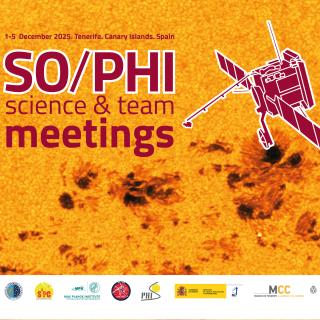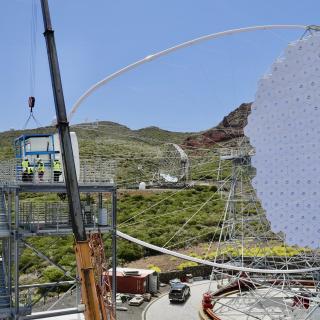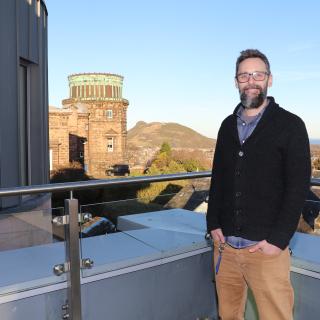"Stars and the Interstellar Medium" is the fifth and final chapter in the series "IAC Research" produced by the Instituto de Astrofísica de Canarias (IAC) in which the Institute explains its main lines of research. In this video the focus is on the two main components of the visible material in the Universe: the stars and the interstellar medium.
The stars are chemical factories which, as well as light, produce during their lifetimes new elements which enrich the universe and which over time become incorporated into other stars, planets, and even into living organisms such as ourselves. The interstellar medium is the matter, mostly gas and dust, between the stars of a galaxy. It is composed of the clouds which contain the ingredients which allow the formation of new stars, and in addition it is the place where the basic components which give rise to life are found. This is why the study of the formation and evolution of the stars and the interstellar medium is basic to our knowledge of the origin and evolution of life in the universe.
The IAC is one of the most important international centres in this field. It published many new scientific results, and is developing specific instrumentation. The Institute has been a pioneer in many discoveries, such as the first stellar mass black hole (an object of extremely high density formed by the collapse of a star) and the first brown dwarf (an object too small to permit hydrogen fuel to "burn" in its interior), but more massive than a planet. It has also participated in the development of spectrographs, instruments which decompose the light from an object into its colours, and allow us to study many of its properties, notable its chemical composition. Among these are LIRIS, an infrared spectrograph on the William Herschel Telescope, OSIRIS, EMIR and HORS for the Gran Telescopio CANARIAS (GTC). At the present time the IAC is involved in the development of MEGARA and MIRADAS for the GTC, and of HARMONI for the European Extremely Large Telescope (E-ELT).
Taking part in this audiovisual production are the researchers rtemio Herrero, Jorge Casares, Arturo Manchado, César Esteban, Nicolas Lodieu, Francisco Garzón, Giuseppina Battaglia, Valentina Luridiana, Sergio Simón and Garik Israelian, as well as the engineer Luis Fernando Rodríguez. The technical team involved in its production was formed by Iván Jiménez (script, direction and edition) Inés Bonet (camera), Daniel López (camera dolly and timelapse), Nayra Rodríguez (production) and Artemio Herrero (scientific advice).
The IAC in five videos
These videos have been coordinated by the Unit of Communication and Science Culture (UC3) of the IAC, and have been funded by the Severo Ochoa Programme, which is an initiative of the Secretariat of State for Research, Development and Innovation of the Ministry of Economy and Competitivity, whose purpose is to promote research of excellence carried out in Spain in any field of science.
The videos explain, in a simple summarized way, the scientific and technological aspects of each branch of study and pick out the benefits which research in astrophysics gives to society. Each video is a mosaic of voices in which the members of the research teams combine to act as narrators blending into a single narrative. The locations are given particular importance, as the narrators are situated in places which show their day to day working environment, and which are parts of the infrastructure and services which make the IAC a centre of excellence with international prestige.
Others videos in the series "IAC Investigates":
- The IAC researches - Solar Physics
- The IAC researches - Planetary Systems
- The IAC researches - Galaxies"
- The IAC researcher - Cosmology and Astroparticle Physicis
Related press release:
- The IAC explains its lines of research in five videos
- First showing of the video "PLANETARY SYSTEMS"
- First showing of the video "GALAXIAS"
- First showing of the video "COSMOLOGY AND ASTROPARTICLE PHYSICS"



